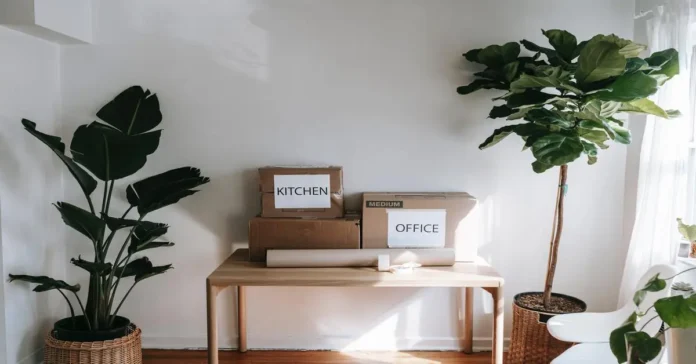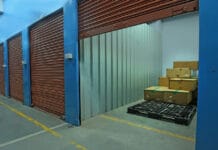Decluttering tips for home goes beyond simply tidying up; it’s about creating an environment that enhances peace, productivity, and functionality. A clutter-free space can significantly boost your mental well-being, reduce daily stress, and make it easier to stay organized. Whether you’re renovating, downsizing, or just aiming for a more efficient home, decluttering plays a vital role. By eliminating unnecessary items and incorporating smart storage solutions like utility storage or self-storage units, you can turn your home into a more manageable, enjoyable space.
With the right approach, decluttering doesn’t have to feel daunting. These quick and simple tips will help you tackle the clutter step by step, making the process easier and less time-consuming. Start by focusing on one area at a time and gradually work your way through. In no time, you’ll notice your home feels more open, organized, and inviting. The benefits of decluttering extend beyond just a cleaner space; they contribute to a more peaceful and balanced lifestyle. Embrace the transformative power of decluttering and enjoy a home that promotes both functionality and tranquility.
1. Decluttering Tips – Start Small
Focusing on one room or specific area at a time prevents you from feeling overwhelmed. Instead of tackling your entire home, begin with a single room. For instance, the kitchen is a great place to start. Begin with the countertop or a single drawer. Clear out items you no longer use or need. Sort through everything and decide what to keep, donate, or discard. Breaking the task into manageable steps helps you see progress quickly. This approach makes the process less daunting and more achievable. You’ll gain momentum as you complete each area and feel motivated to continue. Gradually, you’ll notice a significant difference in your space.
2. Decluttering Tips – The 15-Minute Rule
Decluttering doesn’t have to be a huge, time-consuming task. One of the easiest ways to start is by dedicating just 15 minutes daily. Set a timer for 15 minutes and choose a specific area to focus on—like a kitchen drawer, a bookshelf, or your bathroom cabinet. In that short time, go through the items and decide what you want to keep, toss, or donate. The beauty of this method is that it’s not overwhelming. You’ll be amazed at how much you can accomplish in just a few minutes each day.
3. Use the Four-Box Method
When you’re ready to dive deeper into decluttering, the Four-Box Method is a great strategy. It’s simple and effective. Grab four boxes or containers and label them: “Keep,” “Donate,” “Throw Away,” and “Relocate.” As you go through your belongings, place each item into one of these boxes. The “Keep” box is for things you love and use regularly. The “Donate” box is for items in good condition but no longer needed. The “Throw Away” box is for broken or unusable items. Finally, the “Relocate” box is for things that belong in a different room or area of your home.
4: Decluttering Tips – Clear Surfaces First
When starting your decluttering journey, it’s best to focus on visible surfaces first. These include countertops, tables, and shelves. A clear surface can instantly make a room feel tidier and more organized. Begin by removing everything from these surfaces. Sort through the items, deciding what truly belongs there, what can be stored elsewhere, and what should be discarded or donated.
Clearing surfaces improves a room’s appearance and sets the tone for the rest of your decluttering efforts. Once you’ve cleared a surface, make it a habit to keep it that way. When you use an item, put it back where it belongs. This simple habit helps maintain the cleanliness and organization of your space.
5: Declutter Tips for Home as You Go
To keep your home clutter-free in the long run, it’s essential to make decluttering a daily habit. This doesn’t mean you need to spend hours every day organizing. Instead, it’s about incorporating small actions into your routine that prevent clutter from accumulating. One effective strategy is always to put things away after you use them. This simple step keeps your space tidy and prevents items from piling up.
Another helpful rule is the “one in, one out” principle. Whenever you bring something new into your home, remove something old. This could mean donating a shirt when you buy a new one or recycling an old gadget when you get an upgrade.
6. Donate or Sell Unwanted Items
If you’re getting rid of items that are still in good condition, consider donating or selling them instead of throwing them away. Not only is this better for the environment, but it can also help you earn a little extra money or give back to those in need.
7. Keep Flat Surfaces Clear
Flat surfaces like countertops and tables can quickly become cluttered. Make it a habit to keep these surfaces clear and only put items on them temporarily. This will not only make your space look cleaner but also make it easier to find things when you need them.
By following these easy decluttering tips, you can create a more organized and stress-free living space. Whether you start small or declutter by category, remember to take it one step at a time and enjoy the process.
Final Words for Decluttering Tips for Home
In conclusion, decluttering is more than just tidying up—it’s a transformative process that brings peace, order, and functionality to your home. By removing unnecessary items and using smart storage solutions like utility and self-storage, you can create a space that feels more open, organized, and inviting. Decluttering not only enhances your living environment but also positively impacts your mental well-being, helping reduce stress and promote focus.
The key to successful decluttering is starting small and tackling one area at a time, allowing you to gradually reclaim your space without feeling overwhelmed. As you work through each room, you’ll notice a profound difference in how your home feels and functions. Whether you’re downsizing, renovating, or just looking for a refresh, decluttering will leave your home more efficient and enjoyable, helping you maintain a calm and balanced lifestyle.
FAQs for Decluttering Tips for Home
A. Start small by focusing on one room or area at a time. This helps prevent overwhelm and allows you to see progress quickly.
A. Ask yourself if the item is useful or brings joy. If it hasn’t been used in the last year, it might be time to let it go.
A. Consider donating, recycling, or selling items that are still in good condition. For broken or unusable items, discard them responsibly.
A. Regularly assess your belongings and adopt a “one in, one out” rule to prevent new clutter from accumulating.
A. Use utility storage, bins, shelves, and self-storage units to keep frequently used items accessible and seasonal items stored away.
A. Keep only a few meaningful items that hold strong memories. Consider taking photos of other items for a keepsake without the physical clutter.
A. Decluttering should be a continuous process, but scheduling a thorough declutter every six months can help keep your home organized.
A. Yes, a clutter-free environment promotes calm, improves focus, and reduces feelings of stress by creating a more organized and functional space.
Q9. What should I do if I feel overwhelmed by decluttering?
A. Break the process down into manageable steps. Focus on one area at a time and set small goals to make the task more approachable.
A. By removing excess items, you create more space for the things you truly need, making your home more efficient and easier to navigate.








